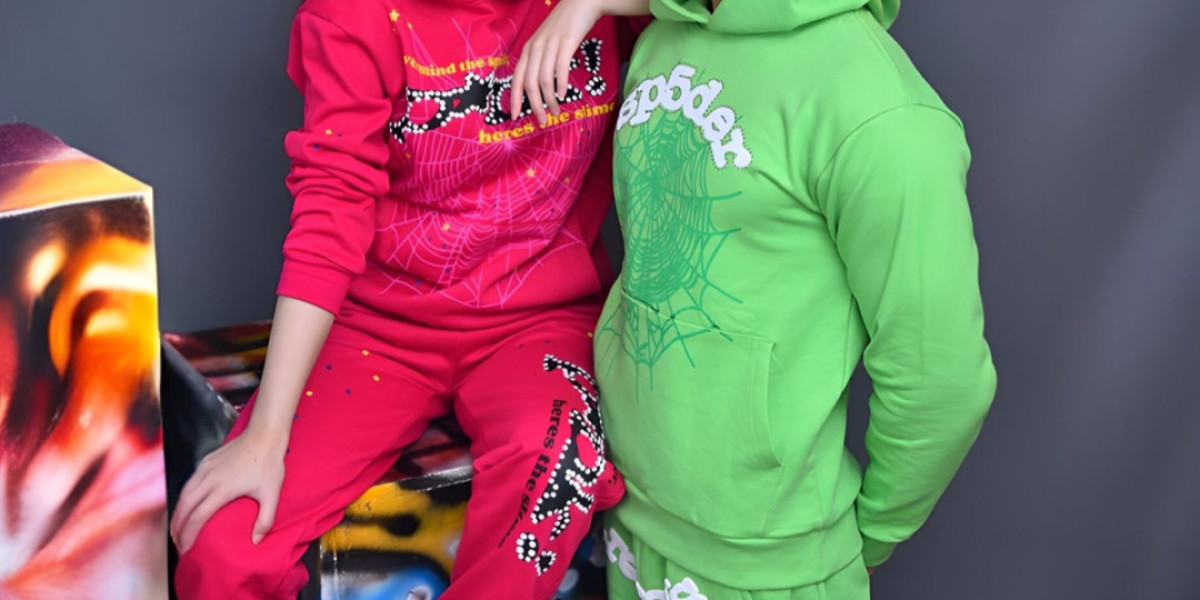In the ever-shifting world of fashion, few brands have managed to fuse raw energy, cultural rebellion, and cosmic symbolism quite like Hellstar. Rising from the underground with a mission to redefine the streetwear landscape, Hellstar is not just a label—it is a mindset, a visual language, and a symbol of modern chaos filtered through fashion. Its meteoric rise has captured the attention of tastemakers, celebrities, and fashion-forward youth, who see in Hellstar a reflection of their desire to disrupt, to resist conformity, and to embrace individuality in the loudest, most unapologetic way possible.
This in-depth exploration of Hellstar will delve into its origins, philosophy, signature styles, cultural impact, and what the future holds for this enigmatic yet powerful brand.
The Origin of Hellstar: Born from Fire, Designed for the Future
Hellstar was founded by Sean Holland and Star, creative forces who envisioned a brand that would merge themes of the metaphysical, the rebellious, and the cosmic. What started as a grassroots experiment quickly caught fire in the fashion underworld. The name “Hellstar” itself is a juxtaposition of two conflicting forces—“Hell,” symbolizing turmoil, rebellion, and raw energy, and “Star,” representing light, divinity, and higher consciousness.
The founders sought to create something more than just clothing. They wanted Hellstar to stand as a symbol for those navigating the harsh realities of life while still dreaming beyond the stars. That duality—light and darkness, heaven and hell—is a constant visual and philosophical theme in their collections.
Initially, Hellstar gained traction through limited releases and street-level marketing, drawing the attention of underground fashion communities and hip-hop influencers. Word spread quickly through social media, especially Instagram and TikTok, where the brand’s visual aesthetic—dark, surreal, and bold—meshed perfectly with youth culture’s evolving tastes.
Philosophy of Chaos and Cosmos: The Deeper Meaning Behind the Threads
Hellstar is far more than a streetwear brand; it is a reflection of existential contrast. The brand’s slogan, “You are not alive on accident,” is a statement of purpose, a reminder that existence—though chaotic and brutal—holds meaning. The brand’s design philosophy mirrors this tension. With each piece, Hellstar embraces cosmic iconography, angelic and demonic symbolism, flames, skulls, and galactic motifs.
This visual tension speaks to a generation grappling with identity, mental health, societal pressure, and spiritual awakening. Hellstar pieces often carry existential messages hidden within the graphics, challenging wearers to think deeply about their existence and direction in life. The brand connects with youth not just as customers, but as co-creators in a shared philosophy of inner fire and cosmic exploration.
The combination of street culture, spiritual depth, and gritty aesthetics forms a powerful identity that resonates far beyond the realm of fashion. It’s not just about looking good—it’s about making a statement.
Signature Style: Aesthetics That Burn Through the Noise
Hellstar’s aesthetic is instantly recognizable and impossible to ignore. It thrives on bold contrasts, surreal graphics, oversized silhouettes, and intense color palettes—often with flame effects, distressed textures, and eerie, interstellar motifs. The brand's signature elements include:
Hellstar Flame Logo: Perhaps the most iconic emblem of the brand, the flaming star represents destruction and rebirth—an echo of both mythological and pop culture themes.
Oversized Hoodies and Tees: With dropped shoulders, exaggerated fits, and loud graphics, these pieces are the core of Hellstar’s product line. They often feature quotes, cosmic symbols, and graphic interpretations of heaven and hell.
Track Sets and Shorts: Athletic influence blends with street rebellion in Hellstar’s matching sets, merging comfort with a raw, aggressive attitude.
Colorways: Hellstar makes masterful use of black, crimson, bone white, neon green, and ultraviolet—a palette that seems pulled from nightmares and dreams alike.
One of Hellstar’s greatest strengths is its consistency. While many brands struggle to maintain a cohesive identity, Hellstar’s collections, though varied in detail, always feel like part of the same universe. You could mix and match pieces from different drops and still retain that Hellstar DNA.
Celebrity Co-Signs: From Underground to the Red Carpet
It wasn’t long before Hellstar caught the eyes of influential figures across music, sports, and entertainment. Hip-hop artists were among the first to champion the brand—rappers like Playboi Carti, Lil Uzi Vert, and Travis Scott have been spotted wearing Hellstar Sweatshirt pieces, helping to catapult the brand into the mainstream. These artists, known for their avant-garde style and boundary-pushing aesthetics, found in Hellstar a kindred spirit.
NBA players, such as Shai Gilgeous-Alexander and Jordan Clarkson, have also embraced the brand, rocking Hellstar outfits both courtside and during tunnel walks. Their adoption of the brand underscores its crossover appeal—Hellstar is as at home on a fashion runway as it is in a hip-hop video or NBA arena.
Unlike traditional fashion houses that rely on calculated endorsements and advertising, Hellstar’s rise has been largely organic. Celebrities wear the brand because it resonates with their own identity—edgy, bold, and non-conformist. This authenticity has only increased its desirability.
Limited Drops and the Power of Exclusivity
Hellstar has mastered the art of scarcity. Most of its collections are released in limited quantities through online drops or pop-up shops, creating immense hype and demand. This exclusivity has fueled a booming resale market, where items often sell for double or triple their original price.
The brand rarely announces drop dates far in advance, instead relying on cryptic Instagram posts and stories to keep fans on edge. This strategy creates a cult-like following, with loyal fans setting alarms, joining waitlists, and flooding comment sections in hopes of securing the latest piece.
By maintaining a sense of mystery and rarity, Hellstar preserves its status as a coveted cultural artifact. Each drop feels like an event, and each piece becomes a collector’s item.
Beyond Fashion: Hellstar as a Cultural Movement
What sets Hellstar apart from many of its peers is the sense that it stands for something deeper. While other brands chase trends, Hellstar seems to be creating its own. Its focus on spiritual and existential themes has elevated it from a fashion label to a cultural movement.
Hellstar taps into the mindset of a generation that is disillusioned with surface-level luxury. This generation craves meaning, even in their clothing. They want to wear something that expresses who they are, what they believe, and what they’ve survived. Hellstar’s pieces become a kind of armor—visual declarations of resilience, inner conflict, and cosmic awareness.
In this way, Hellstar functions almost like wearable philosophy. The designs challenge, provoke, and inspire. They do not whisper; they scream.
Community and Identity: The People Behind the Flame
Hellstar’s community is as diverse as it is passionate. From skaters and graffiti artists to musicians, poets, and college students—those who wear Hellstar see themselves as part of something larger. The brand has become a symbol of creative resistance, a flag for those who reject the mainstream in favor of something more meaningful.
Hellstar doesn’t just sell clothes; it sells a sense of belonging. Its visual motifs, philosophical slogans, and symbolic designs create an inside language that only the initiated understand. Wearing Hellstar is like joining a secret society—one that worships chaos, values self-expression, and dreams of the stars.
This grassroots, people-first approach has helped Hellstar grow organically. It has never needed to sell out or dilute its identity to appeal to a wider audience. In fact, its uncompromising nature is precisely what draws people in.
The Future of Hellstar: What Lies Ahead?
As the fashion industry evolves, the question remains: where does Hellstar go from here?
If current trends are any indication, Hellstar is only getting started. With increasing collaborations, rumors of international pop-ups, and expanding product categories (including accessories, home goods, and possibly footwear), the brand seems poised to evolve from a cult favorite to a full-fledged lifestyle empire.
There’s also potential for deeper storytelling. As Hellstar continues to explore its philosophical and cosmic themes, we could see entire collections built around mythologies, spiritual archetypes, or futuristic narratives. Hellstar’s ability to blend narrative depth with street-ready fashion gives it a unique edge in a market saturated with surface-level designs.
Moreover, sustainability and social impact may become future pillars of the brand. As younger consumers demand accountability, Hellstar has the opportunity to align its rebellious ethos with progressive action—supporting mental health causes, promoting artistic communities, and incorporating ethical production practices.
Hellstar Is Not a Brand—It’s a Revelation
In a world where most fashion labels focus on fleeting trends and seasonal aesthetics, Hellstar Hoodie stands tall as a disruptor. It doesn’t just sell hoodies or T-shirts—it sells a belief system, a feeling, a fire. It dares to ask deep questions about life and existence while wrapping those ideas in raw, visceral designs.
Hellstar’s rise is proof that today’s fashion consumer craves more than fabric and labels. They crave story, soul, and substance. They want to wear something that screams who they are—loud, proud, and unafraid.
For those who’ve ever felt caught between heaven and hell, who carry both light and shadow within them, Hellstar is more than clothing. It is a mirror, a manifesto, and a movement.
And this fire is only getting brighter.






